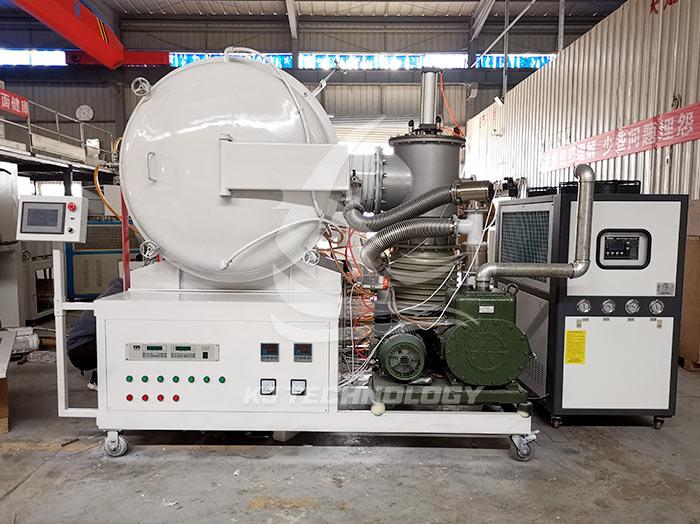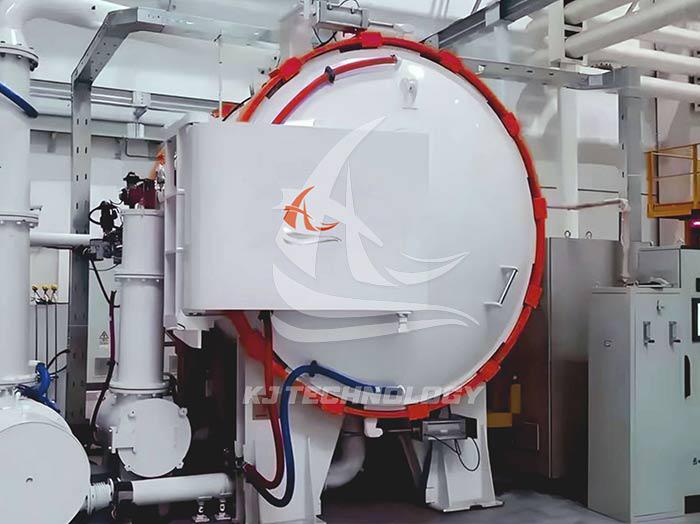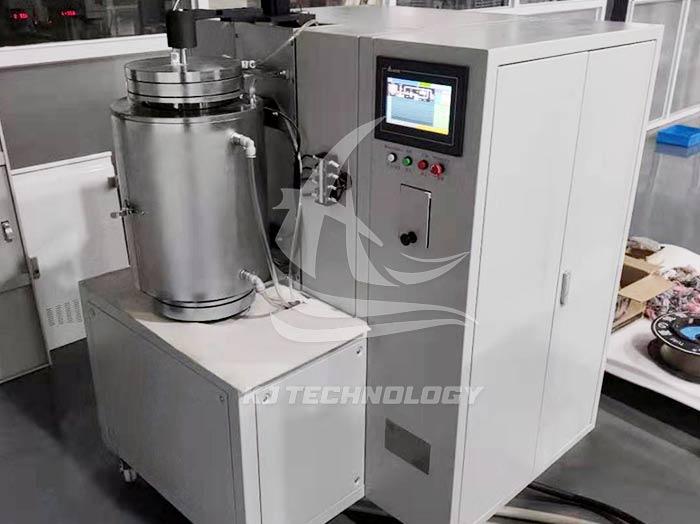Precautions for brazing electric furnace with high vacuum heat treatment
 10-15-2025 Author: KJ technology
10-15-2025 Author: KJ technology
When using a high vacuum heat treatment brazing electric furnace for brazing, it is necessary to strictly follow the operating specifications, from equipment inspection, parameter control to safety protection, all of which need to be carefully executed. The specific precautions are as follows:
1. Equipment preparation and inspection
Environment and basic conditions
Ensure that the surrounding environment of the equipment is clean and well ventilated, and avoid sources of pollution such as dust and oil stains.
Check if the water, electricity, and gas supply are normal: the voltage should be stable, and the air and water pressure should meet the equipment requirements.
Before opening the furnace door, it is necessary to confirm that the interior of the heating chamber is dry, free of debris, oil or water stains, and if necessary, use specialized tools to clean it.
Sealing performance inspection
Focus on inspecting the sealing ring between the furnace body and the flange to ensure that there is no aging, wear, or improper installation.
Regularly perform leak detection on the vacuum system, using a helium mass spectrometer leak detector or a medical needle to suck acetone/ether and spray it to the suspected leak point, and observe changes in the vacuum gauge reading.
Vacuum system and pump assembly
Before starting, check the working status of the vacuum pump (mechanical pump, Roots pump, diffusion pump), clean or replace the filter, and ensure that the oil level is normal and free of contamination.
The diffusion pump needs to be preheated for 90 minutes before switching to high vacuum mode to avoid a decrease in pumping efficiency due to insufficient preheating.
2. Process parameter control
Vacuum degree management
When vacuuming, follow the equipment instructions. In the initial stage, use a mechanical pump and a roughing valve. After the diffusion pump is preheated, switch to the high valve.
The vacuum degree needs to meet the process requirements (such as below 3 × 10 ⁻ ³ Pa) before starting heating, and continuous monitoring should be carried out during the process to prevent leakage from causing a decrease in vacuum degree.
temperature control
Set the heating curve based on the material characteristics to avoid temperatures that are too high or too low. For example, the brazing temperature for aluminum alloy is usually 500-600 ℃, and for titanium alloy it is 800-950 ℃.
Use a multi-point temperature recorder to monitor the temperature uniformity inside the furnace, ensuring that the temperature difference in each area is within the allowable range (such as ± 5 ℃).
The surface temperature of the heating element may be 100 ℃ higher than the surrounding medium, and overloading should be avoided.
Solder and workpiece preparation
The brazing material should be selected according to the base material, ensuring that the melting point is lower than the base material and the wetting properties are good. For example, Ag Cu Ti active solder can be used for aluminum copper connections.
The surface of the workpiece needs to be dry, clean, and free of dust, grease, or oxides. Aluminum alloys can undergo mild chemical etching to remove oxide films.
Reasonably place workpieces to ensure even distribution of heat and avoid heat concentration. Adequate clearance should be left between the workpieces and the furnace wall to ensure smooth airflow.
3. Standard operating procedures
Loading and vacuuming
After loading, close the furnace door and start the mechanical pump and roughing valve for preliminary air extraction.
After preheating the diffusion pump, close the roughing valve and open the high valve for high vacuum pumping.
After the vacuum degree reaches the standard (such as J3 monitoring point lighting up), start the heating system.
Heating and insulation
Regularly check the operating status and process parameters of the equipment during the heating process to ensure temperature stability.
The insulation stage needs to maintain a set time to ensure that the brazing material is fully melted and wetted on the brazing surface.
Cooling and discharge
After the insulation is completed, turn off the heating system and start the cooling system. Natural cooling or forced cooling (filled with nitrogen/argon) can be selected.
After the furnace temperature drops to a safe range (such as below 450 ℃), open the furnace door and wear protective gloves when removing the workpiece to avoid burns.
4. Safety protection measures
personal protection
Operators are required to wear protective goggles, gloves, masks, and other equipment to prevent injury from high temperatures, harmful gases, or splashes.
Maintenance or overhaul of the equipment is prohibited during operation. In case of emergency, the "emergency stop" button should be pressed immediately.
Equipment safety
The pressure inside the vacuum furnace needs to be stably controlled, and the vacuum gauge should be turned off before inflation to prevent aging.
When the temperature exceeds 400 ℃, rapid cooling is not allowed. The molybdenum heating furnace needs to be cooled to below 200 ℃ before stopping the supply of protective nitrogen gas.
5. Maintenance and upkeep
Daily cleaning
Clean the interior of the furnace after each use to prevent impurities such as oxide scales from falling onto the electric heating element and causing short circuits.
Regularly clean heat-resistant steel components such as the bottom plate, molybdenum heating rod, and furnace insulation layer, strictly prohibit knocking, and carefully remove oxide scale.
Regular maintenance
Check if the heating element is loose or damaged, and replace it if necessary.
Verify the accuracy of instruments such as thermocouples and temperature controllers to ensure reliable temperature control.
Replace aging seals, inspect vacuum pumps and valves, and maintain system sealing.








